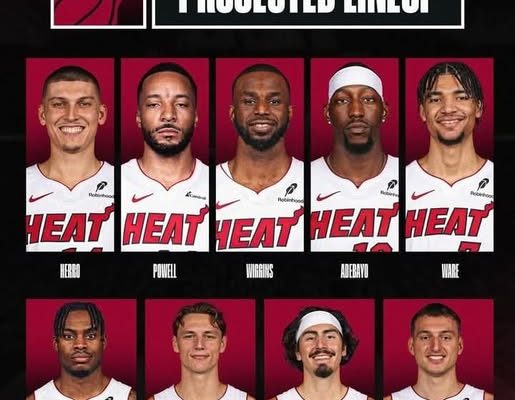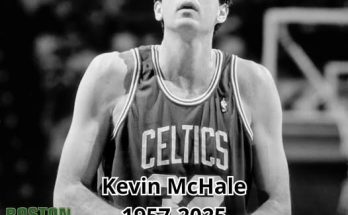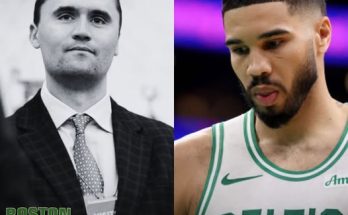The Miami Heat have never been strangers to defying expectations. With a franchise identity built on “Heat Culture”—a philosophy emphasizing toughness, discipline, and relentlessness—they’ve consistently made something out of seemingly nothing. Whether it was making the NBA Finals in 2020 as a fifth seed during the pandemic bubble or pushing through the Eastern Conference Playoffs as an eighth seed in 2023, the Heat have earned a reputation for being the league’s most dangerous underdog. Now, entering the 2025-26 season, Miami’s roster has undergone yet another significant transformation, this time built around a new collection of promising talent and role-specific acquisitions. The additions of Keyonte Johnson, Terry Rozier, Simone Fontecchio, Vladislav Goldin, and Norchad Gardner have sparked intrigue and debate around the league. Can this newly assembled group make a serious push toward the NBA Finals?
At the core of the Heat’s latest rebuild—or more appropriately, retooling—is the organization’s continued belief in maximizing undervalued talent. It’s what propelled them to develop undrafted gems like Max Strus, Gabe Vincent, and Duncan Robinson into playoff contributors. It’s also the philosophy that has allowed Erik Spoelstra to flourish as one of the top coaches in the league, steering rosters filled with role players and aging stars to meaningful postseason battles. With the departure or regression of veteran stalwarts like Kyle Lowry, Kevin Love, and possibly even Jimmy Butler looming large, the franchise has leaned into a new vision. This vision incorporates athletic youth, multi-positional wings, gritty guards, and high-IQ big men—all of whom have something to prove. The 2025-26 campaign is shaping up as one of the most pivotal seasons in Miami’s recent history.
Terry Rozier’s presence on the roster brings a much-needed scoring punch and veteran leadership to the Heat’s backcourt. While not an elite point guard by traditional standards, Rozier has consistently averaged solid scoring numbers, maintaining a deadly three-point shot and the ability to create his own offense off the dribble. Miami’s system doesn’t require a dominant ball-dominant guard to thrive; it demands efficient execution, timely decision-making, and hard-nosed defense. Rozier, despite being undersized, has embraced physicality and pressure in key moments throughout his career. His ability to play both guard spots also gives Spoelstra flexibility in rotating lineups and adjusting in late-game scenarios.
One of the more fascinating additions is Keyonte Johnson, the former Florida and Kansas State standout whose journey back to professional basketball has been nothing short of remarkable. Johnson, known for his physical strength, rebounding prowess, and elite finishing ability, brings an edge that aligns seamlessly with Heat Culture. His health concerns once cast doubt over his future, but now fully cleared and in peak condition, Johnson has shown flashes in Summer League and preseason camps that he can be a legitimate two-way contributor. His build allows him to guard multiple positions, and his mentality makes him a fan favorite in the making. If he develops a consistent outside shot and becomes a trustworthy defender in switch-heavy schemes, Johnson could emerge as one of the steals of the offseason.
Simone Fontecchio is another critical piece in this puzzle. The Italian wing was underutilized during his earlier stints with Utah and Detroit but demonstrated the kind of shooting and spatial awareness that Miami has historically developed into playoff assets. Fontecchio’s size, coupled with his catch-and-shoot efficiency, gives Miami another shooter to spread the floor. In a league increasingly predicated on spacing and pace, Fontecchio can thrive in Miami’s offensive system, especially alongside slashers like Rozier and Johnson. He may not be a lockdown defender, but he’s serviceable and can be coached into a system defender—a trait Spoelstra has worked wonders with in the past.
The arrival of Vladislav Goldin may very well be the most underrated move of the offseason. A 7’1” big man with mobility, soft hands, and a nose for the offensive glass, Goldin projects as a perfect developmental center in the mold of Bam Adebayo’s early years. While he won’t supplant Adebayo any time soon, Goldin offers legitimate backup potential and could form a dangerous twin tower pairing in short stints, especially against teams that struggle to guard length. Miami has lacked a consistent backup center who could protect the rim and set strong screens. Goldin, with the right development, could be that player. His international background also fits the team’s ethos of mental discipline and team-first basketball.
Perhaps the most intriguing wildcard is Norchad Gardner. Having risen through the ranks at Miami with a relentless rebounding motor and bruising physicality, Gardner’s transition to the NBA has been smoother than expected. Though slightly undersized for a forward-center hybrid, Gardner plays with a fire that more than makes up for his lack of height. His instincts on the glass and ability to draw fouls in traffic add another dynamic to the Heat’s bench unit. In many ways, he channels the spirit of Udonis Haslem—tough, vocal, and tireless. His presence in the locker room and willingness to do the dirty work could help solidify this Heat team’s identity as one of the grittiest squads in the East.
All these individual additions, however, must be evaluated within the context of Miami’s existing core. Bam Adebayo remains one of the best two-way big men in the league, and his ability to anchor a defense while initiating offense from the top of the key is invaluable. His leadership has quietly blossomed over the years, and with Jimmy Butler’s future uncertain, Adebayo is now the unquestioned face of the franchise. Tyler Herro, if he can stay healthy, provides another scoring option who can take over games in stretches. But the pressure is mounting on Herro to evolve beyond just a microwave scorer and become a more consistent playmaker and defender. If he takes that next step, the Heat’s ceiling significantly rises.
The bigger question hovering over this revamped roster is not talent—it’s cohesion and timing. Can these new pieces come together in time to contend with the likes of Boston, Milwaukee, Philadelphia, and a rapidly improving Indiana squad? Chemistry has always been one of Miami’s strongest assets, but building it with new, younger players can take time. The early part of the season will be crucial in establishing roles, rotations, and identity. Spoelstra, a master tactician, will need to blend veteran savvy with youthful exuberance. He’s done it before, but the margin for error this time is thinner.
Health will also play a pivotal role. The Heat have been snakebitten by injuries in the past, particularly to key players during critical stretches. With an influx of young talent, the team will need to monitor minutes and workload carefully. There’s enough depth now to rest players without completely compromising competitiveness, especially with the likes of Fontecchio and Johnson capable of absorbing starting minutes if needed. But should Adebayo or Herro go down, the team’s hopes could again teeter on the edge of collapse.
Defensively, Miami has always prided itself on aggression and switchability. With Johnson, Gardner, and Adebayo, they can roll out extremely versatile defensive units capable of switching 1-through-4 and protecting the paint. Rozier is no slouch on the perimeter either, and Fontecchio’s length can bother spot-up shooters. While not an elite defensive team on paper, this group has the potential to grow into one of the league’s more annoying defenses—relentless in their pursuit of loose balls, hard closeouts, and grinding possessions deep into the shot clock.



